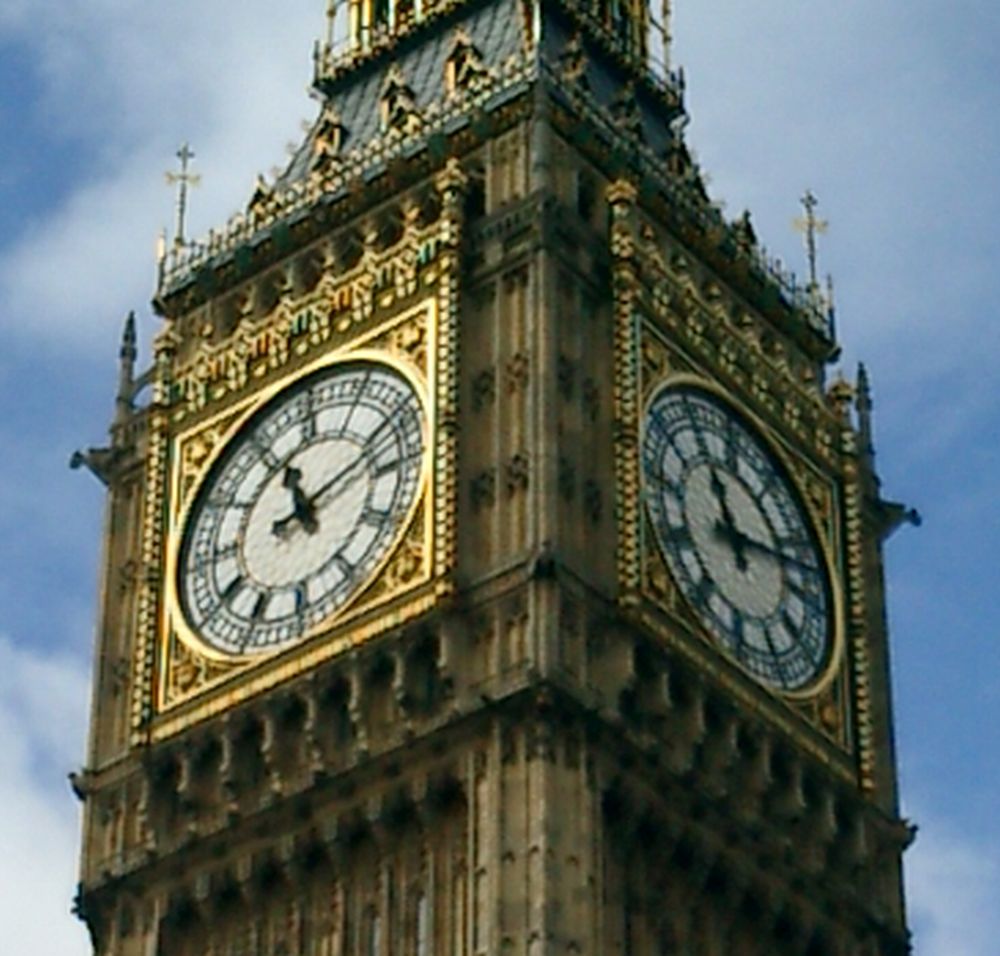Nothing special, just what I thought was a nice snap:
But if you are technically oriented, it does raise a good question: are the hands on the different faces mechanically or otherwise synchronized to each other? In a normal mechanical clock, normally the mechanism keeps the hands turning – but the hands themselves can be slipped freely, for manual adjustment. But how is this handled on the London Clock Tower?
And that raises a very interesting point that a lot of people don’t know about: the topic of slips and fits. Have you ever noticed how some parts turn very freely, such as a bicycle wheel – whereas other parts turn with stiffer resistance, such as the hands of a clock.
Probably everyone knows that machinists work in machine shops, and they use blueprints and precision machines like lathes and CNC machines to fabricate highly precise metal parts. But very few people know there is a sub-branch of precision machining known as slips and fits – it is all about how to specify (with an international specification, no less!) and with extreme, mega-tolerance how two parts should behave when they are in mechanical contact with each other.
